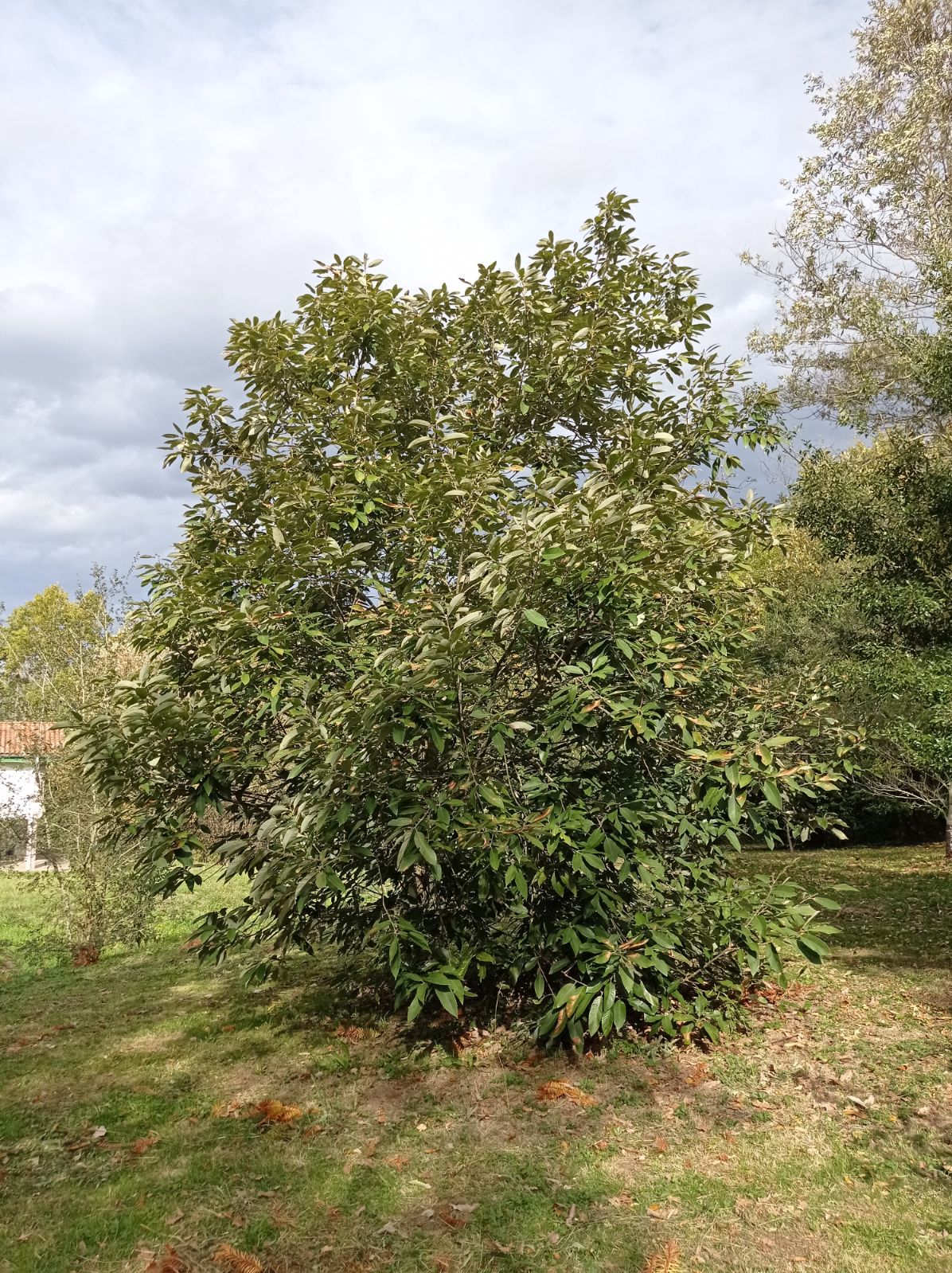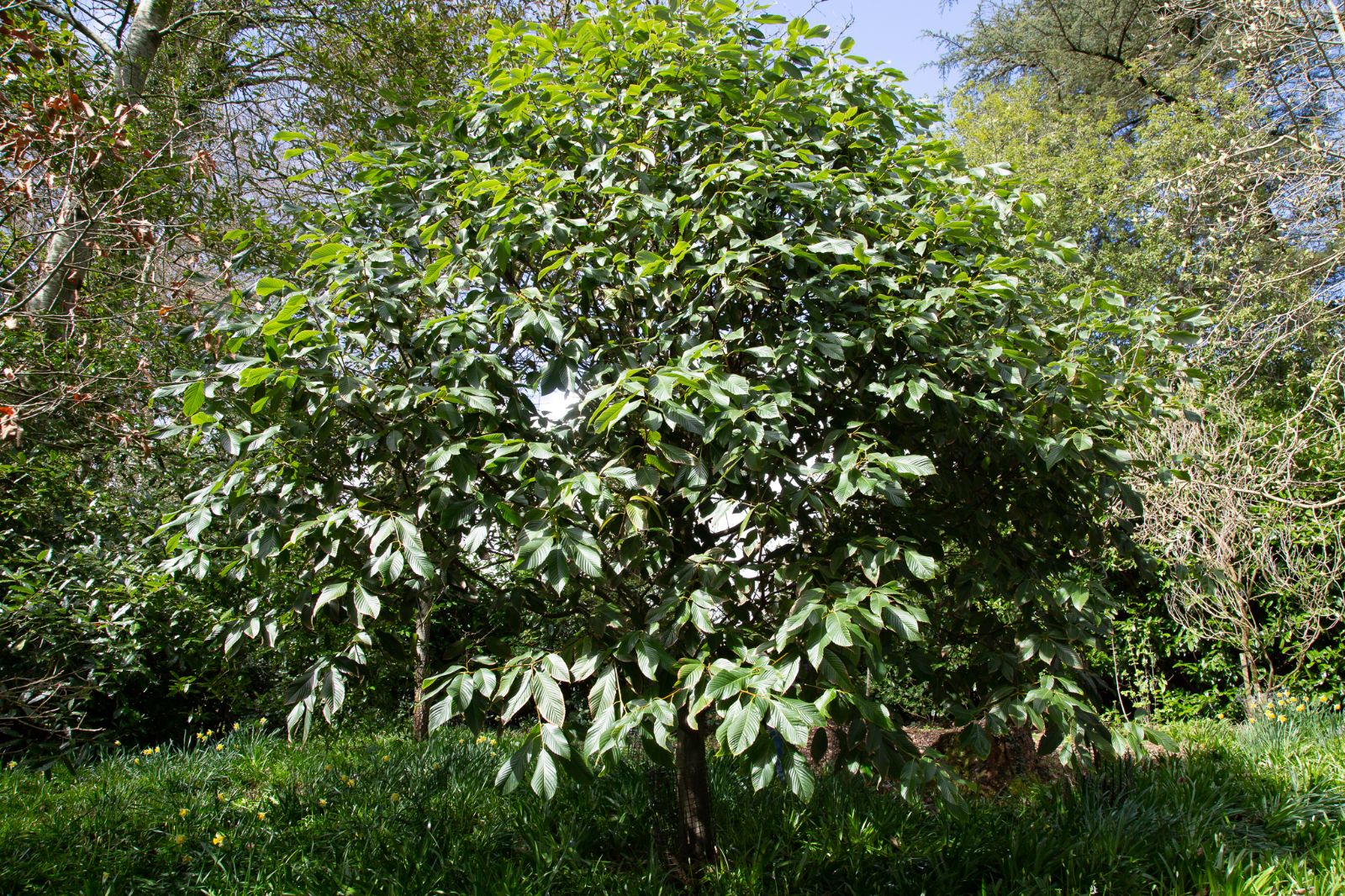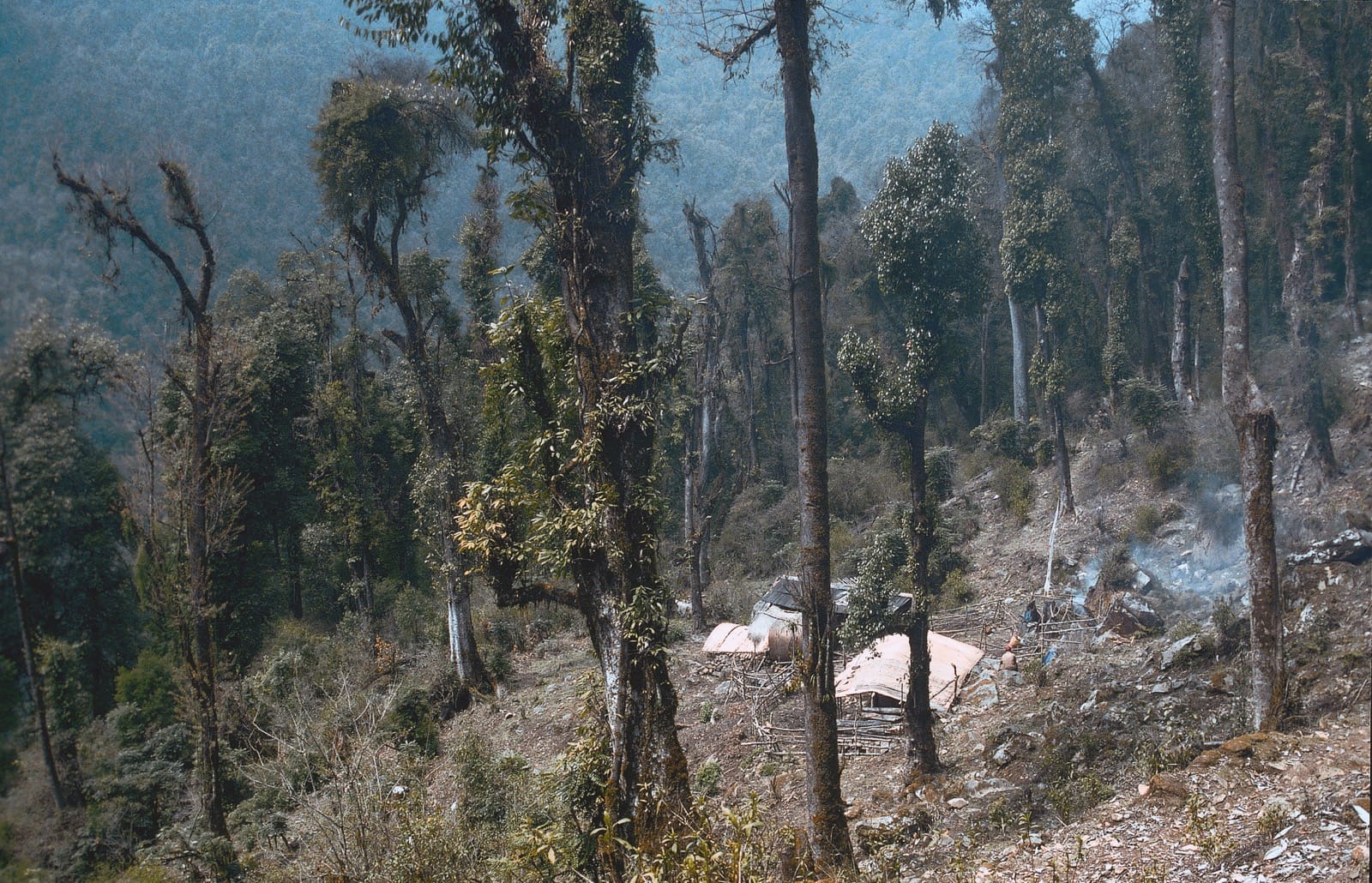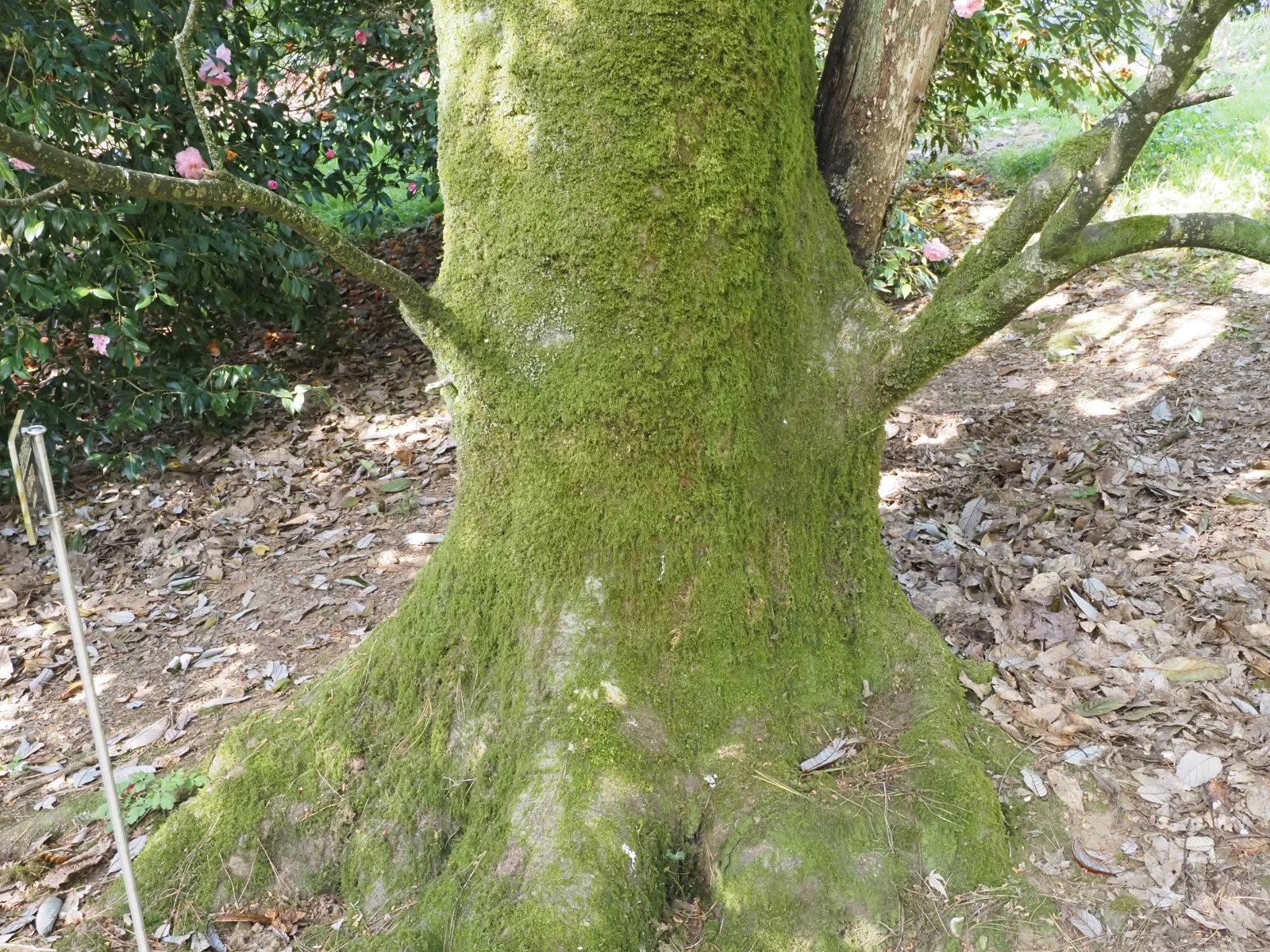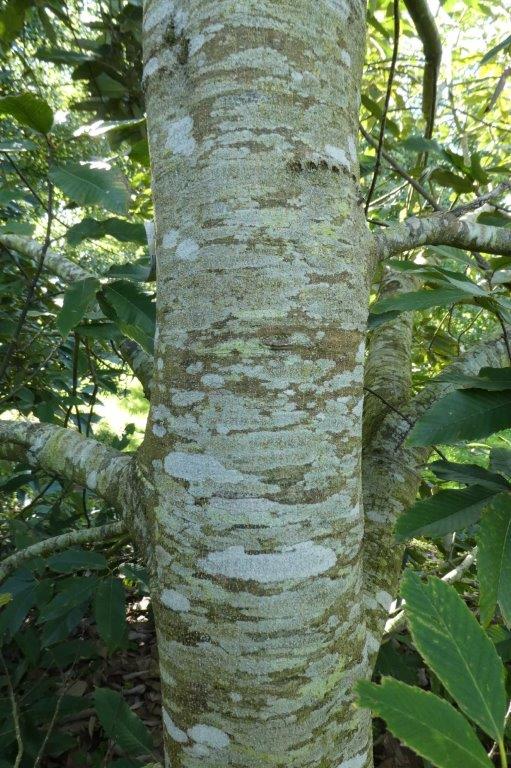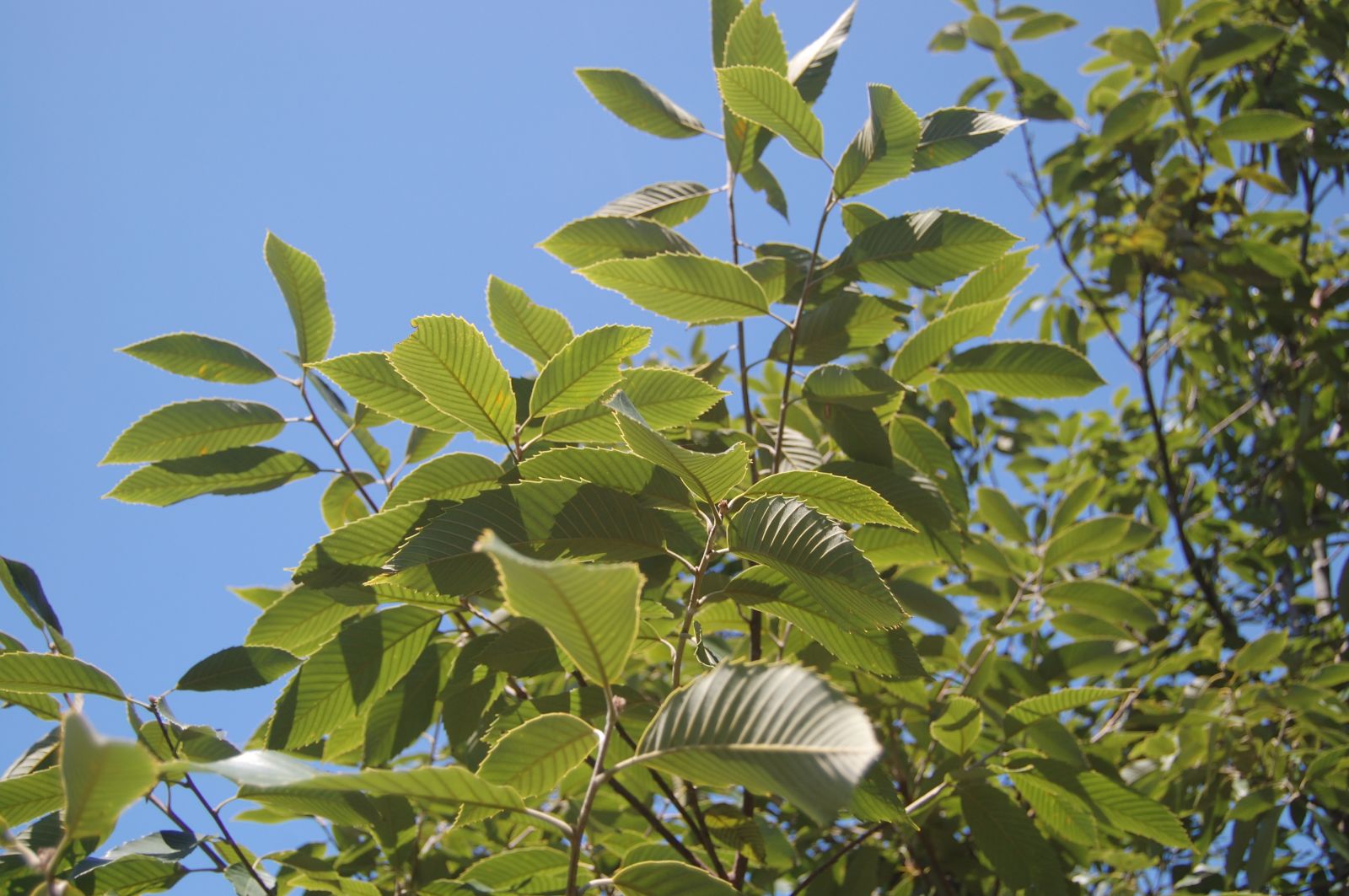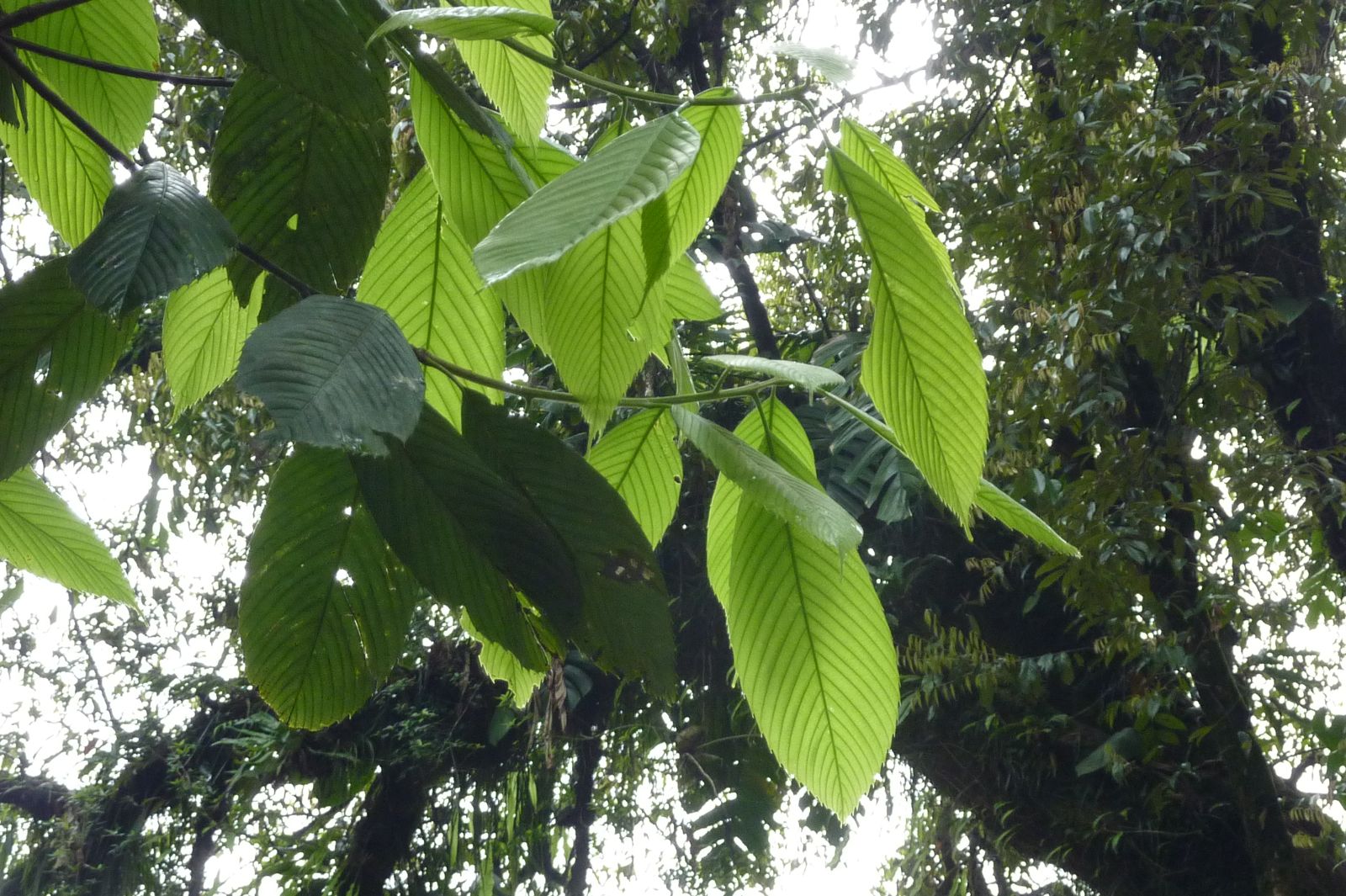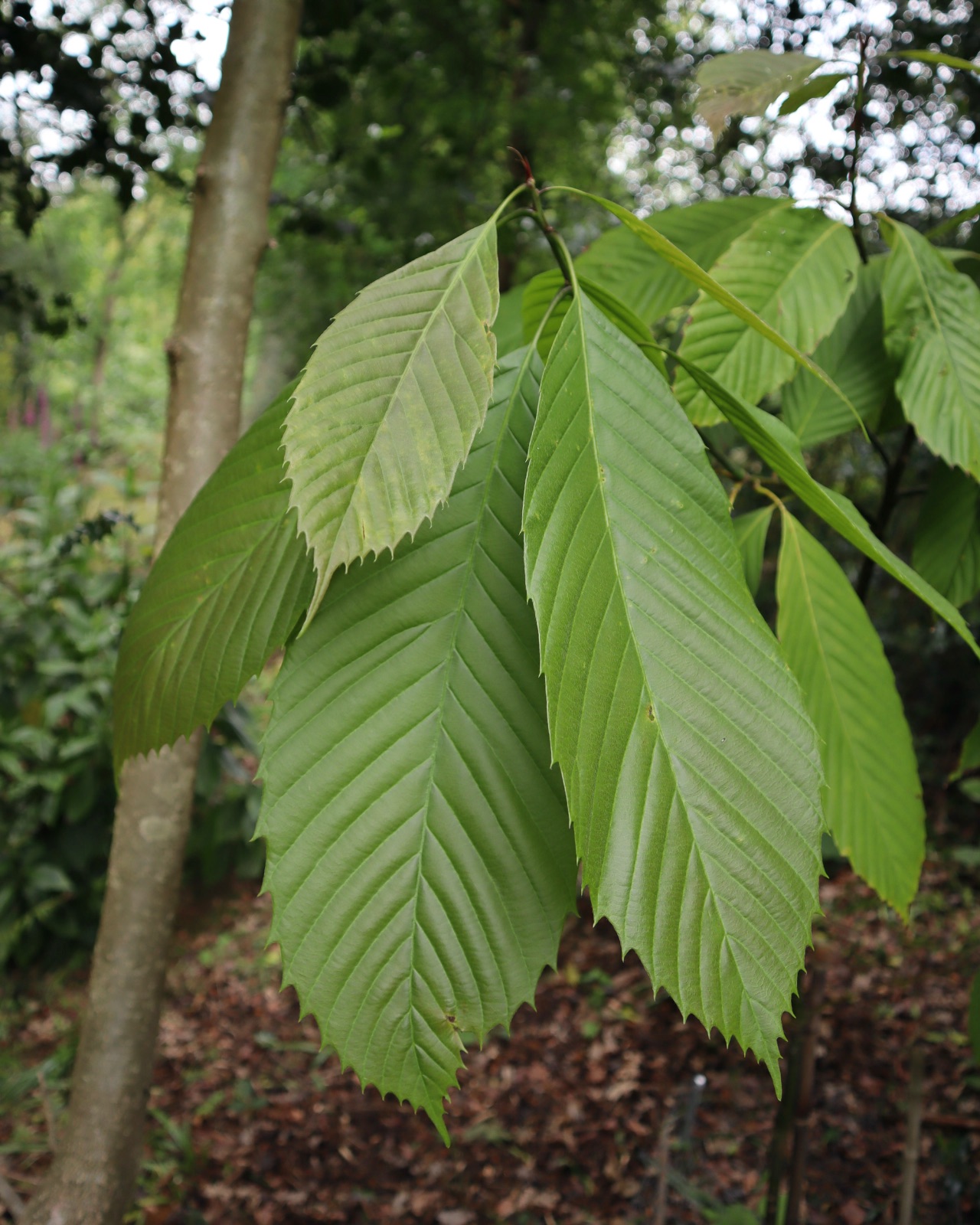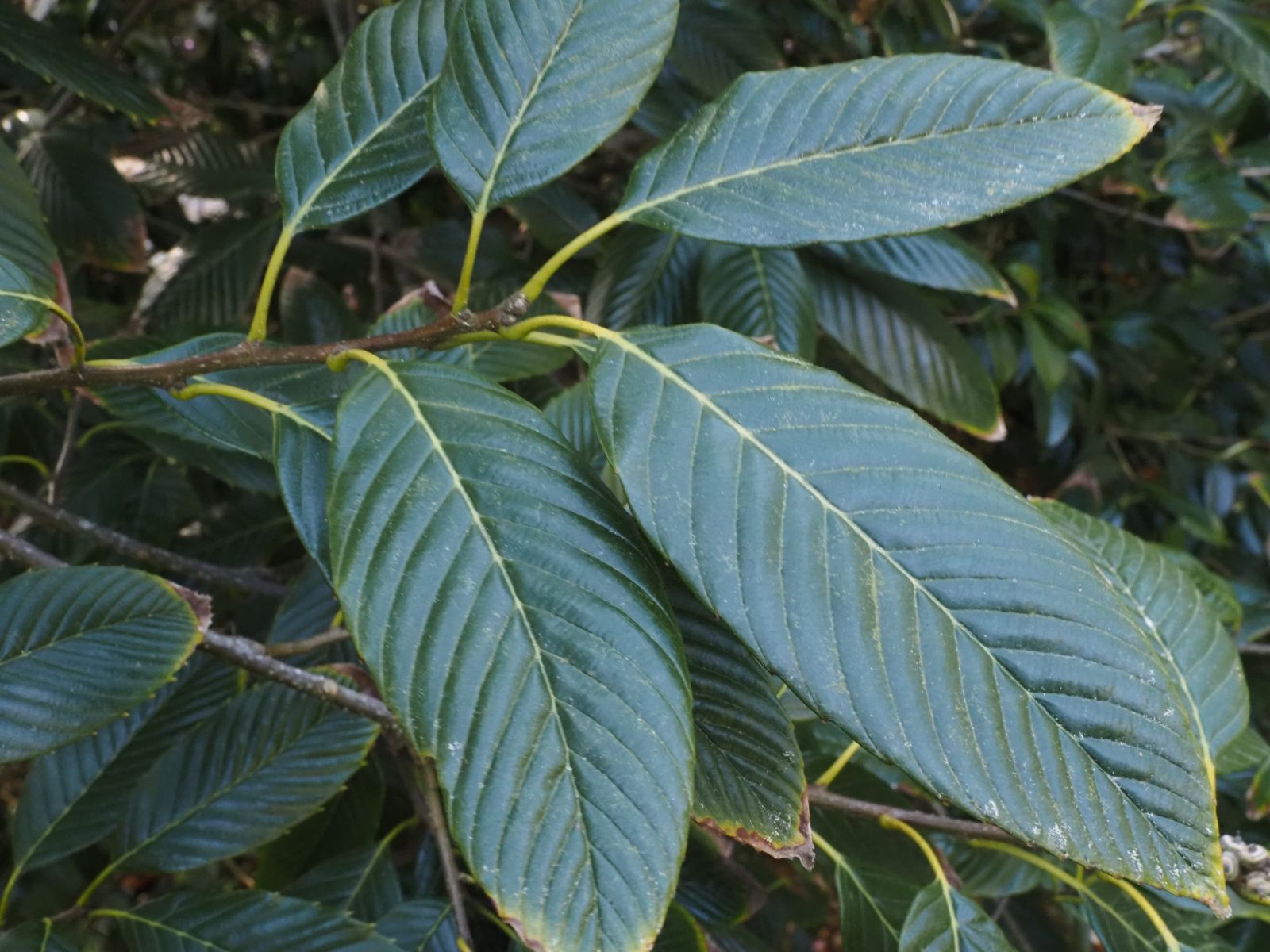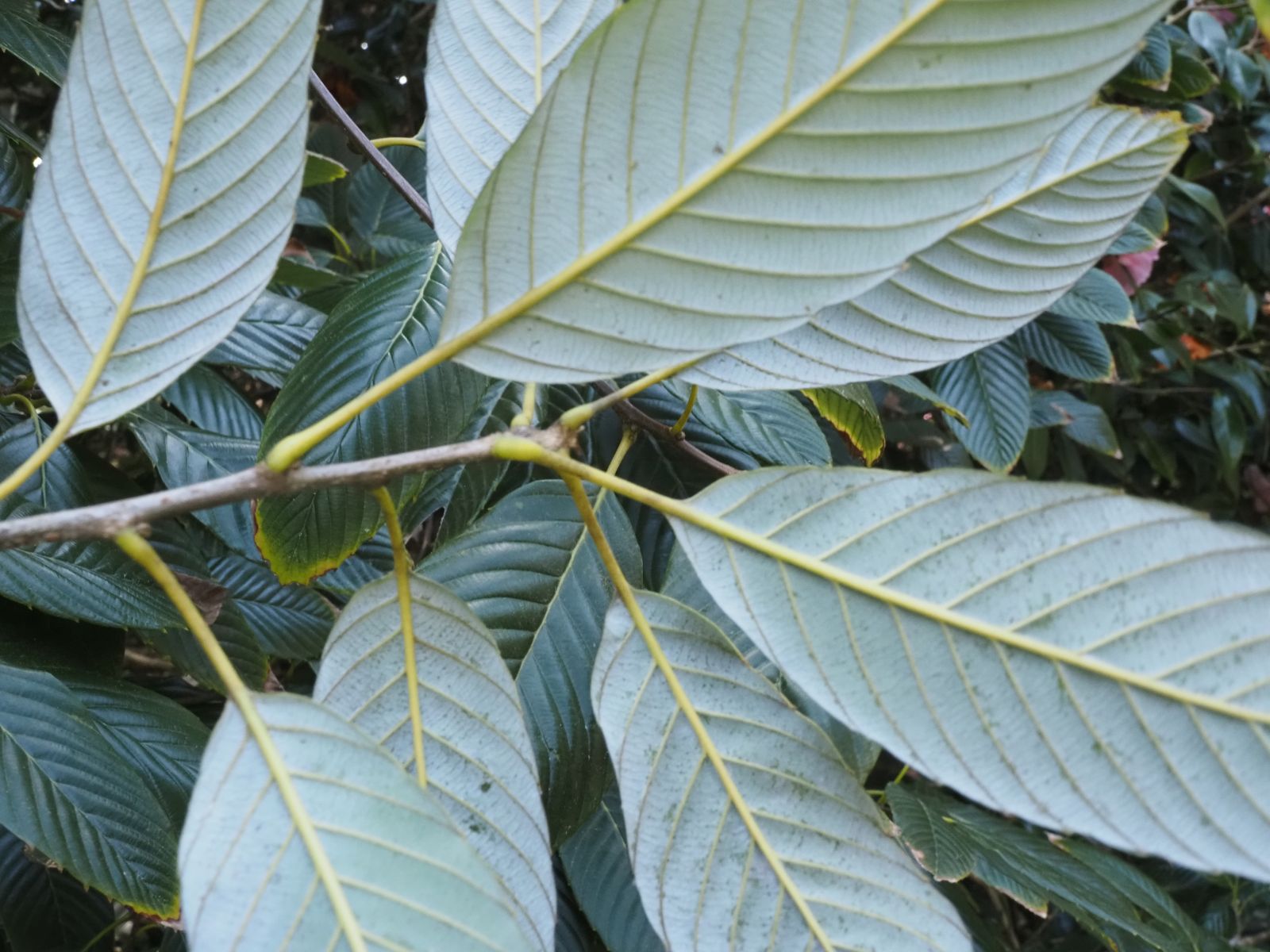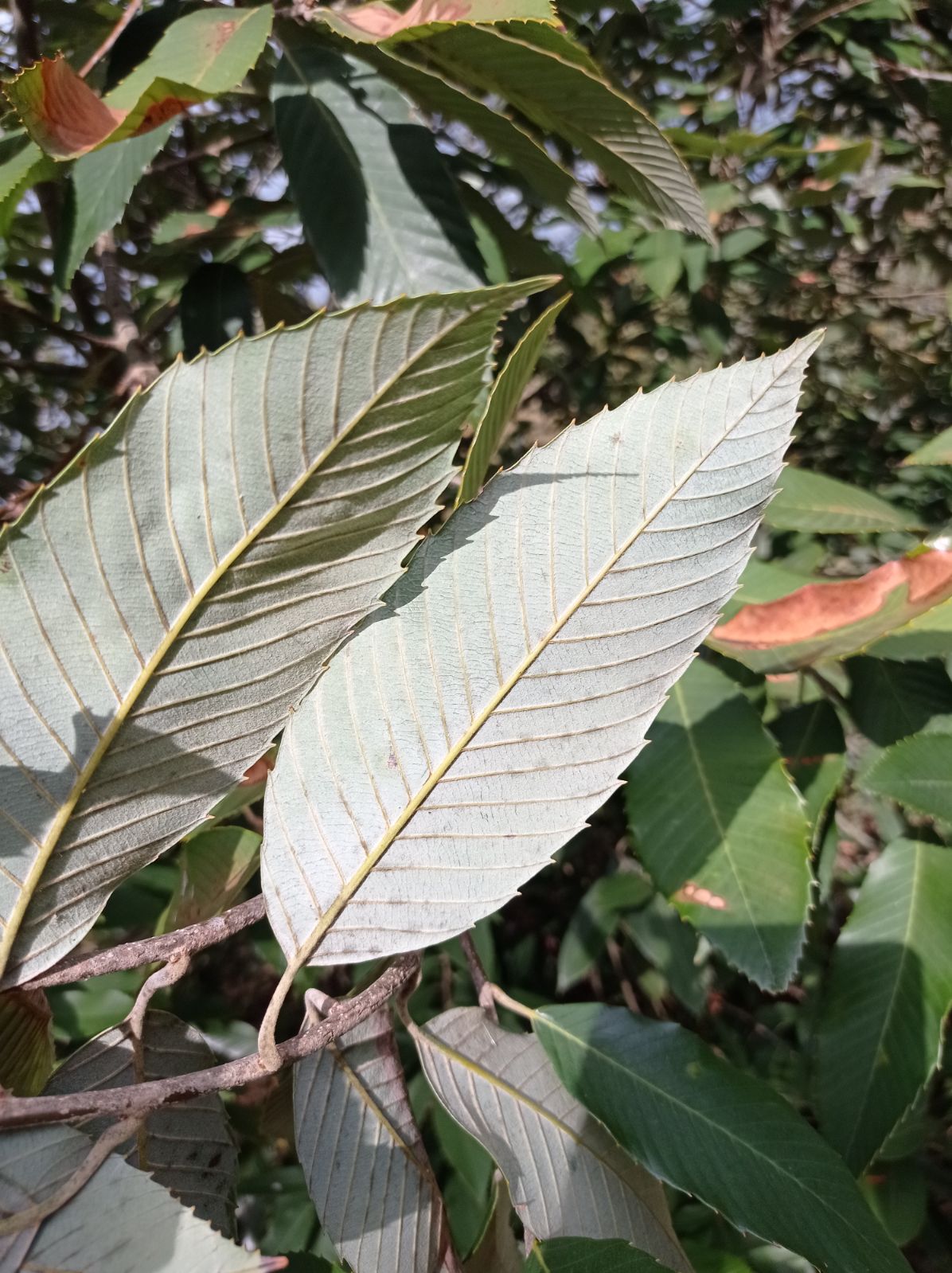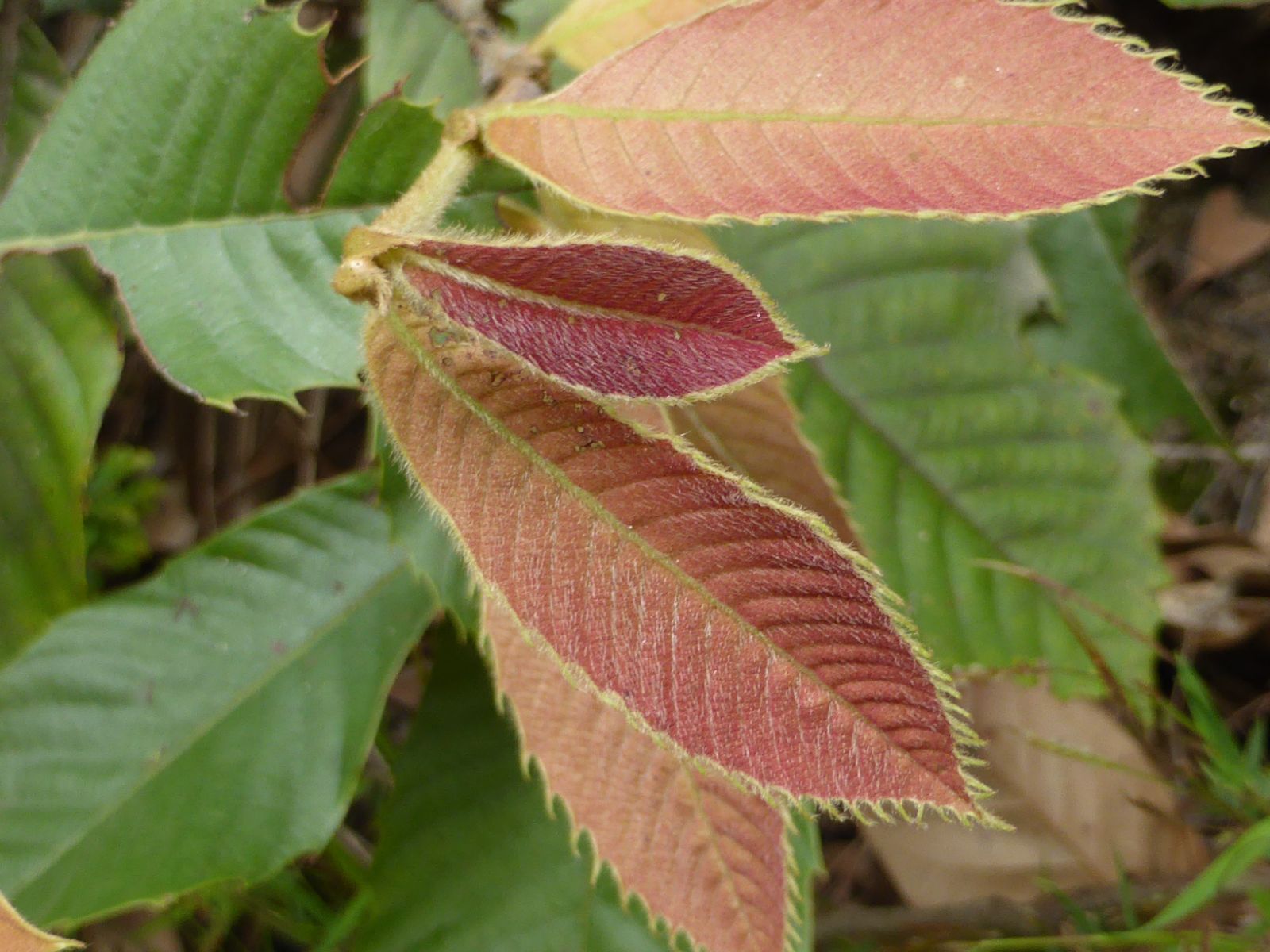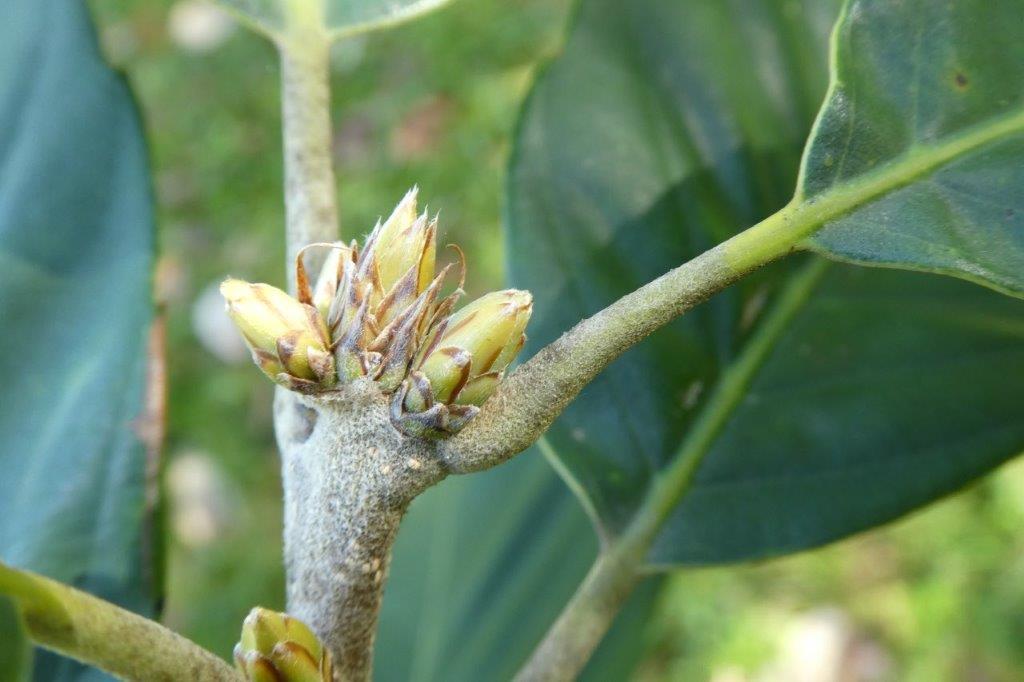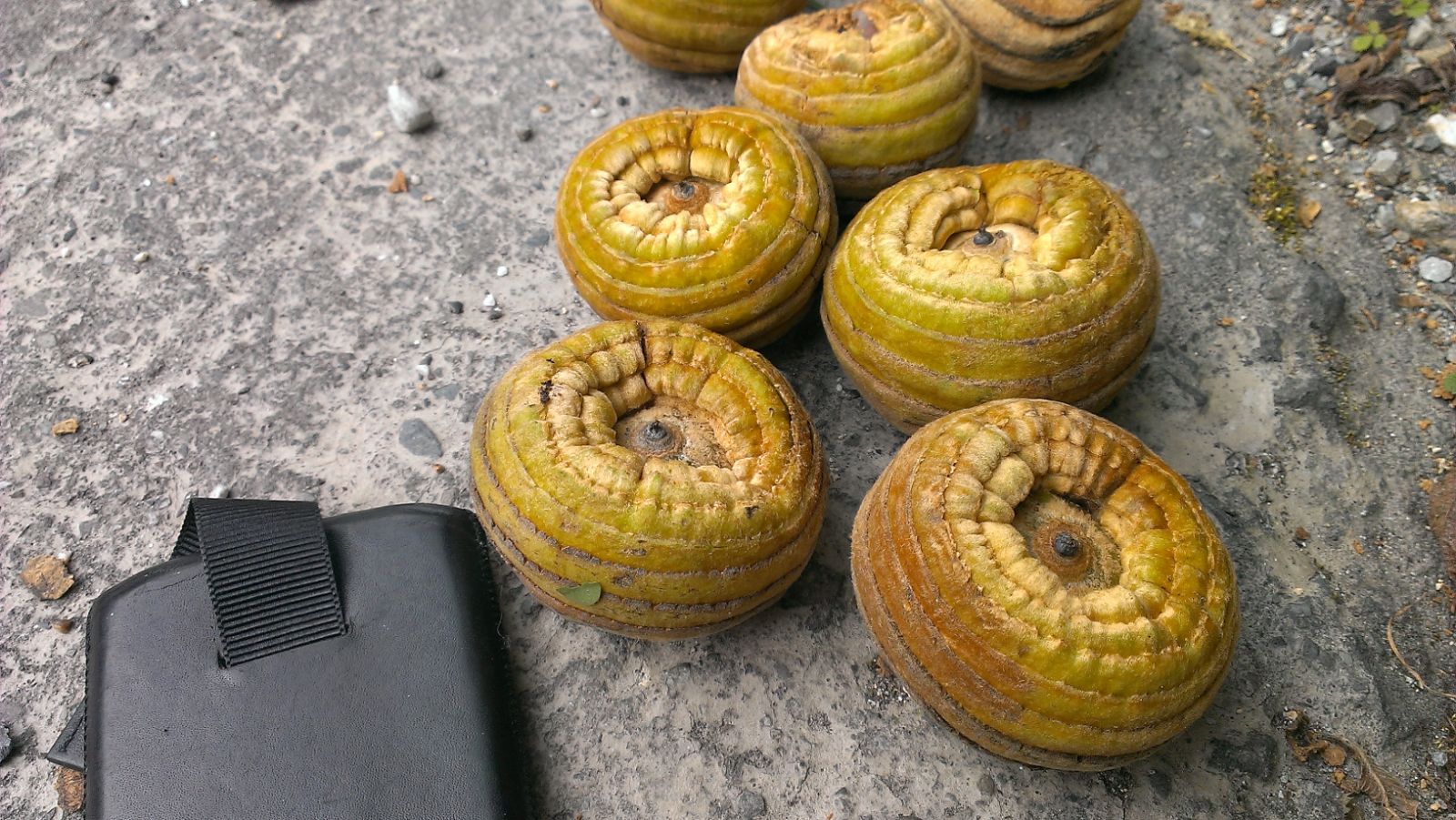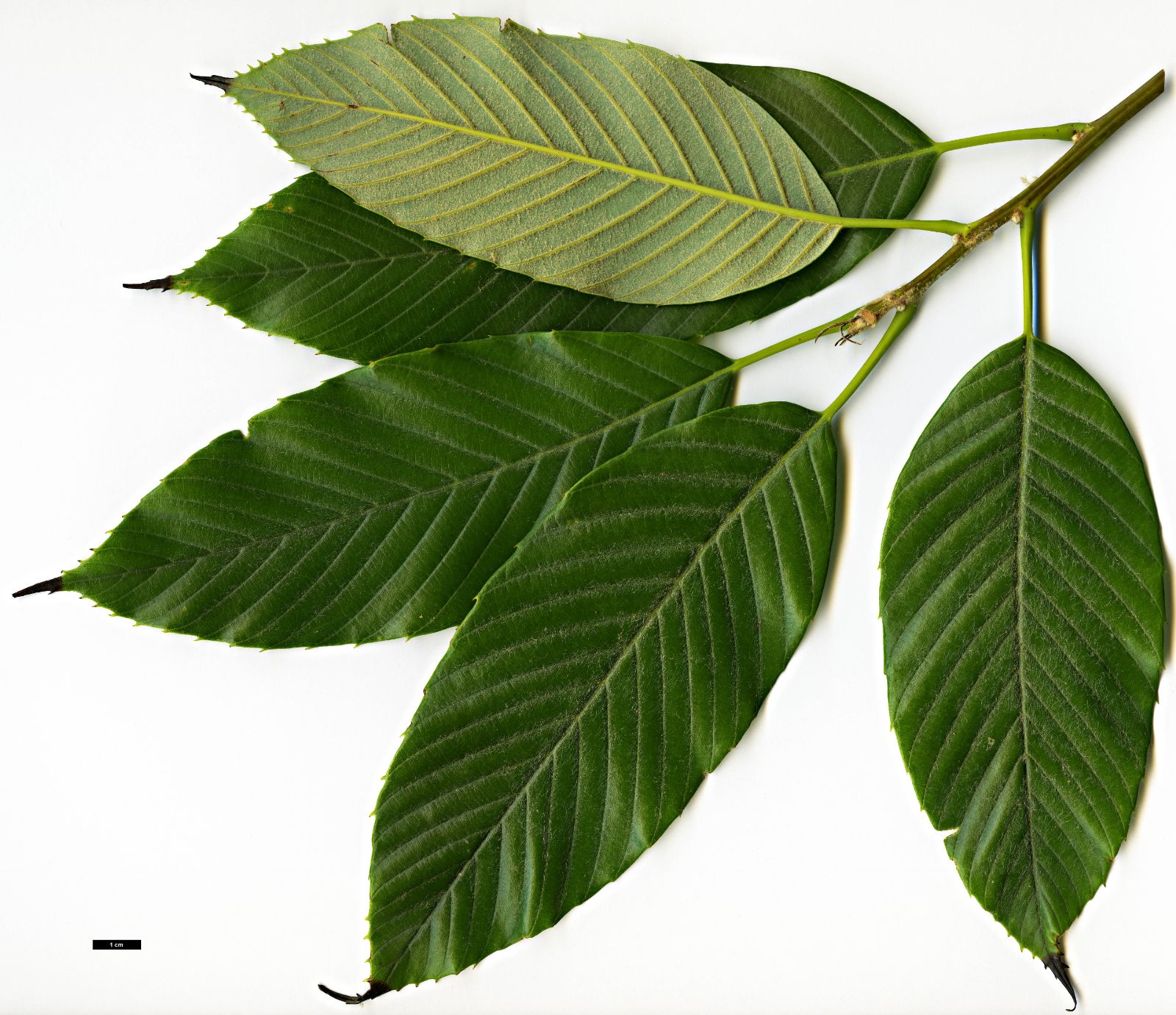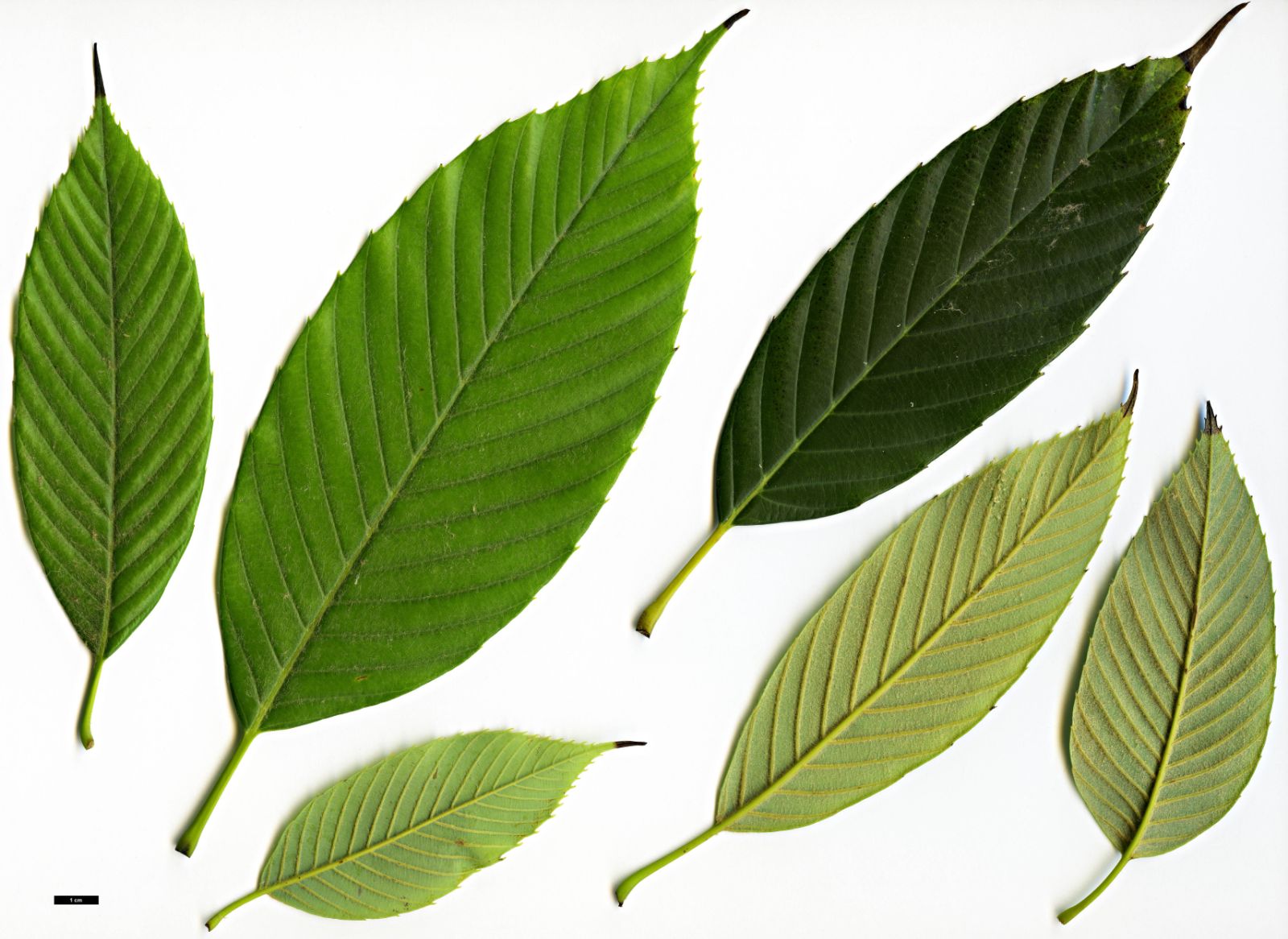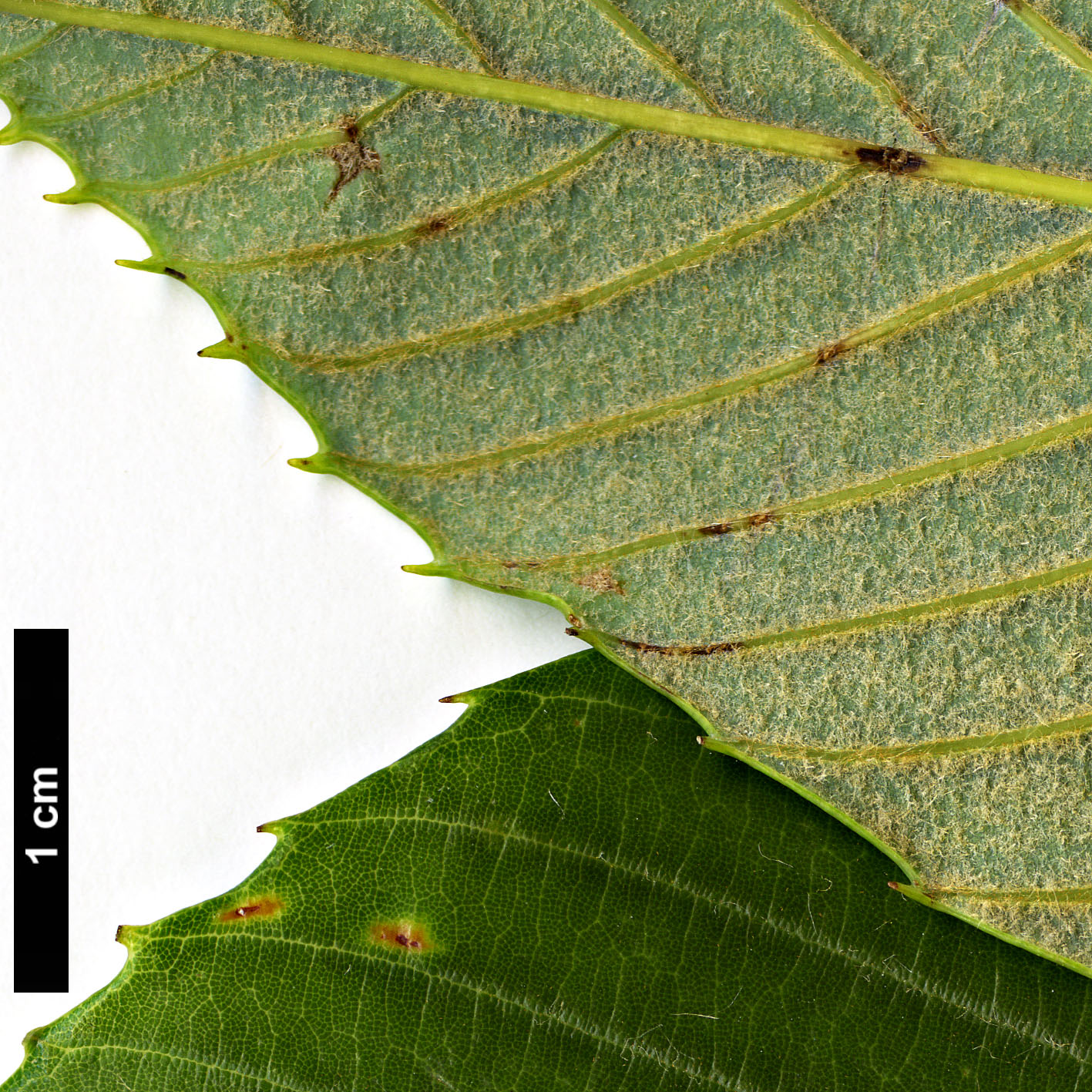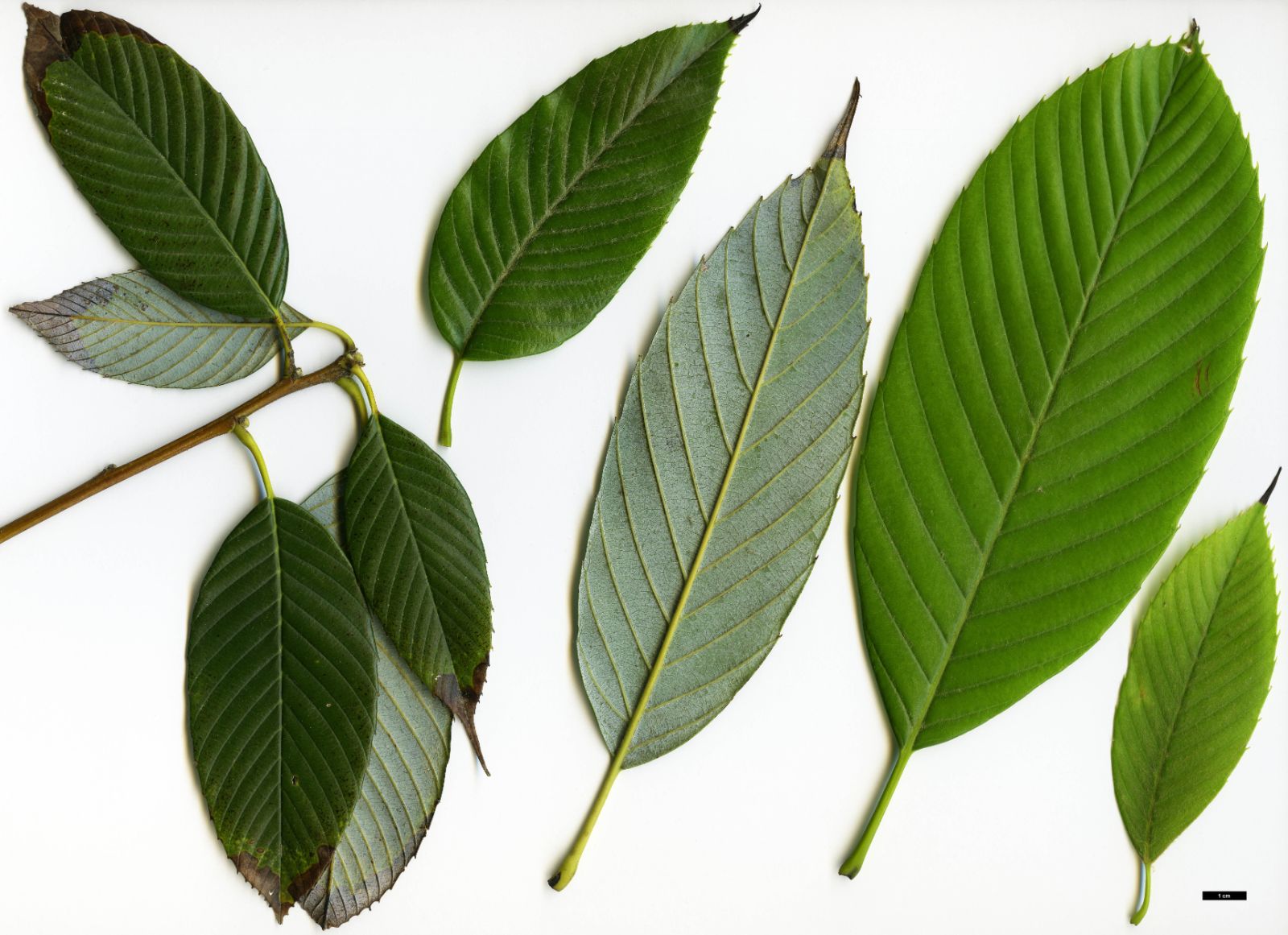Quercus lamellosa
Sponsor
Kindly sponsored by
The Trees and Shrubs Online Oak Consortium
Credits
Allen Coombes & Roderick Cameron (2022)
Recommended citation
Coombes, A. & Cameron, R. (2022), 'Quercus lamellosa' from the website Trees and Shrubs Online (treesandshrubsonline.
Genus
- Quercus
- Subgen. Cerris, Sect. Cyclobalanopsis
Common Names
- 薄片青冈 (bao pian qing gang)
- फलाँट (falant)
Synonyms
- Dyropsila aprica Raf.
- Cyclobalanopsis fengii Hu & W.C. Chang
- Cycobalanopsis lamelloides (C.C. Huang) Y.T. Chang
- Cyclobalanopsis lamellosa (Sm.) Oerst.
- Cyclobalanopsis lamellosa var. nigrinervis (Hu) Z.K. Zhou & H. Sun
- Cyclobalanopsis nigrinervis Hu
- Quercus imbricata Buch. Ham. ex D.Don.
- Quercus lamellata Roxb.
- Quercus lamelloides C.C. Huang
- Quercus lamellosa var. nigrinervis (Hu) Z.K. Zhou & H. Sun
- Quercus paucilamellosa A.DC.
- Perytis lamellosa (Sm.) Raf.
Other taxa in genus
- Quercus acerifolia
- Quercus acherdophylla
- Quercus acrodonta
- Quercus acuta
- Quercus acutifolia
- Quercus acutissima
- Quercus afares
- Quercus affinis
- Quercus agrifolia
- Quercus alba
- Quercus aliena
- Quercus alnifolia
- Quercus aquifolioides
- Quercus arizonica
- Quercus arkansana
- Quercus aucheri
- Quercus augustini
- Quercus austrina
- Quercus × auzendei
- Quercus baloot
- Quercus bambusifolia
- Quercus baronii
- Quercus bicolor
- Quercus brantii
- Quercus buckleyi
- Quercus canariensis
- Quercus canbyi
- Quercus candicans
- Quercus castanea
- Quercus castaneifolia
- Quercus cerris
- Quercus chenii
- Quercus chrysolepis
- Quercus coccifera
- Quercus cocciferoides
- Quercus coccinea
- Quercus conspersa
- Quercus crassifolia
- Quercus crassipes
- Quercus delavayi
- Quercus dentata
- Quercus deserticola
- Quercus dolicholepis
- Quercus douglasii
- Quercus dumosa
- Quercus durifolia
- Quercus eduardii
- Quercus ellipsoidalis
- Quercus emoryi
- Quercus engelmannii
- Quercus engleriana
- Quercus euboica
- Quercus eugeniifolia
- Quercus fabri
- Quercus faginea
- Quercus falcata
- Quercus floribunda
- Quercus frainetto
- Quercus franchetii
- Quercus fruticosa
- Quercus fusiformis
- Quercus gambelii
- Quercus garryana
- Quercus geminata
- Quercus georgiana
- Quercus germana
- Quercus gilliana
- Quercus gilva
- Quercus glabrescens
- Quercus glauca
- Quercus graciliformis
- Quercus gravesii
- Quercus griffithii
- Quercus grisea
- Quercus guyavifolia
- Quercus hartwissiana
- Quercus hemisphaerica
- Quercus × hispanica
- Quercus hondae
- Quercus hypargyrea
- Quercus hypoleucoides
- Quercus ilex
- Quercus ilicifolia
- Quercus imbricaria
- Quercus incana
- Quercus infectoria
- Quercus insignis
- Quercus ithaburensis
- Quercus kelloggii
- Quercus × kewensis
- Quercus kiukiangensis
- Quercus laceyi
- Quercus laevis
- Quercus lanata
- Quercus lancifolia
- Quercus laurifolia
- Quercus laurina
- Quercus × leana
- Quercus leucotrichophora
- Quercus × libanerris
- Quercus libani
- Quercus lobata
- Quercus lobbii
- Quercus lodicosa
- Quercus longinux
- Quercus longispica
- Quercus look
- Quercus × ludoviciana
- Quercus macranthera
- Quercus macrocalyx
- Quercus macrocarpa
- Quercus macrolepis
- Quercus marilandica
- Quercus mexicana
- Quercus michauxii
- Quercus mongolica
- Quercus monimotricha
- Quercus montana
- Quercus morii
- Quercus muehlenbergii
- Quercus myrsinifolia
- Quercus myrtifolia
- Quercus nigra
- Quercus × numidica
- Quercus oblongifolia
- Quercus obtusata
- Quercus oglethorpensis
- Quercus oxyodon
- Quercus pagoda
- Quercus palmeri
- Quercus palustris
- Quercus pannosa
- Quercus parvula
- Quercus petraea
- Quercus phellos
- Quercus phillyreoides
- Quercus planipocula
- Quercus poilanei
- Quercus polymorpha
- Quercus pontica
- Quercus prinoides
- Quercus pubescens
- Quercus pyrenaica
- Quercus rehderiana
- Quercus reticulata
- Quercus robur
- Quercus rotundifolia
- Quercus rubra
- Quercus rugosa
- Quercus rysophylla
- Quercus sadleriana
- Quercus salicina
- Quercus sartorii
- Quercus × schneideri
- Quercus schottkyana
- Quercus semecarpifolia
- Quercus senescens
- Quercus serrata
- Quercus sessilifolia
- Quercus setulosa
- Quercus shumardii
- Quercus sinuata
- Quercus spinosa
- Quercus stellata
- Quercus stenophylloides
- Quercus suber
- Quercus subspathulata
- Quercus tarokoensis
- Quercus tatakaensis
- Quercus texana
- Quercus tomentella
- Quercus trojana
- Quercus tungmaiensis
- Quercus turbinella
- Quercus × turneri
- Quercus undulata
- Quercus utahensis
- Quercus utilis
- Quercus uxoris
- Quercus variabilis
- Quercus velutina
- Quercus virginiana
- Quercus vulcanica
- Quercus warburgii
- Quercus wislizenii
- Quercus xalapensis
Tree to 40 m tall and 3 m trunk diameter, evergreen, sometimes subevergreen, spreading habit. Bark greyish brown, rough in places. Young twigs covered in floccose, tawny tomentum, glabrescent, later dark grey, bearing elongated, pale lenticels. Buds short and almost round, with brown pubescent scales. Leaves leathery, oval, oval-lanceolate, oblong or almost elliptic, 15–45 cm long × 5–22 cm wide, base cuneate or almost rounded, apex acute or acuminate, upper surface glabrous, shiny green, lower surface whitish or glaucous and waxy except for the midvein; leaves emerge covered in pubescence, upper surface with pale brown, shortly stellate hairs; leaves sometimes fall before new leaves emerge; midvein and secondary veins straight, prominent below and impressed above, 10–35 pairs of secondary veins, extending to the margin, tertiary veins conspicuous below. Petiole glabrous, 2–4.5 cm long. Cupule rounded, depressed, lignified, 2.5–4 cm high × 5–7.5 cm wide, cupule wall 0.8–1 cm thick, enclosing 2⁄3–4⁄5 of the nut, made up of 7–10 concentric rings set one above the other, thinly lamellate, finely toothed, outside and inside orangish tomentose, very silky at first then glabrous or slightly tomentose, interior lightly silky. Acorn turbinate or almost spherical, rounded or truncated at the end, 2–3 × 3–4 cm, at first tomentose, then glabrous, usually solitary or grouped on a short, robust spike; stylopodium present, about 5 mm in diameter. Acorns ripen in the first year. (le Hardÿ de Beaulieu & Lamant 2010; Huang et al. 1999).
Distribution Bhutan Myanmar Northeast China Guangxi, Xizang, Yunnan India Assam, Sikkim Nepal Thailand North
Habitat Mixed mesophytic forests in mountains at 1300–2500 m, in association with Q. leucotrichophora and Q. thomsoniana, Rhododendron grande, Castanopsis tribuloides, Lithocarpus pachyphyllus, Acer campbellii, Magnolia campbellii, Betula alnoides, Carpinus viminea, Symplocos lucida, Magnolia doltsopa, Magnolia cathcartii, Arundinaria racemosa and several other bamboo species.
USDA Hardiness Zone 8
RHS Hardiness Rating H4
Conservation status Near threatened (NT)
Taxonomic note The var. nigrinervis, originally described as a species in 1996, present in Xizang (Tibet) at around 2200 m, has been considered a synonym of Q. lamellosa since 2006 (le Hardÿ de Beaulieu & Lamant 2010).
Since its discovery by Buchanan-Hamilton in Nepal in 1802, Quercus lamellosa has smitten Western travelers with its imposing, lofty habit, luscious foliage, and voluminous, thickly ringed acorns. Sir Joseph Hooker described it as ‘by far the noblest species of Oak known’ (Hooker & Cathcart 1855); for le Hardÿ de Beaulieu & Lamant (2010) it is ‘le plus beaux de tous les chênes.’ In contrast, it makes a sorry sight in areas where it is savagely pruned to provide forage for livestock and frequently cut down for timber. Its allure for temperate-zone gardeners is heightened by its borderline hardiness, allowing it to survive in only the warmest areas, and even there tantalizing collectors by forming cupules that don’t materialize into its famed acorns.
In habitat it is found in pure stands or isolated in small groups in mountain forests in mild and humid climates influenced by monsoons. Though it can be found on steep slopes and ridges, it prefers deep, mellow humus soils or well-drained sandy loam on hills and moderate slopes. It appreciates a sunny aspect. Though in theory hardy to zone 8, it does not have strong resistance to frost or drought. It is sensitive to fire but resprouts after being cut down, coppicing well (le Hardÿ de Beaulieu & Lamant 2010).
The acorns are among the largest in the genus, their size enhanced by the thick cupules which enclose them. Large acorns may have evolved due to a need to produce larger and longer radicles, required for the seedling to become established in the type of soil they occupy (Vázquez Pardo 2015). A kilogram of Q. lamellosa acorns typically contains 60 acorns, compared to an average of over 200 for Q. robur (le Hardÿ de Beaulieu & Lamant 2010; Major 2002). Hooker (1855) reported that in a mast year the mass of these acorns on the roads around Darjeeling made them dangerous for riders, as they caused the horses to stumble. J.E. Smith’s original description (1814) likened them to small apples. The cupules are green and spongy when fresh, but when they dry they resemble brown rosebuds with recurved scales (The Oaks of Chevithorne Barton 2011).
The story of Q. lamellosa in cultivation is to large extent a litany of lamentation. Hooker (1855) remarked that acorns he sent back to England did not germinate as the cotyledons are very fleshy and the plumule sprouts as soon as the acorns are exposed to the heat of the plains. At Arboretum de la Bergerette in France, a seedling planted high on a hillside in the hope of avoiding frosts ‘disappeared without trace’ (Haddock 2012). Chevithorne Barton received one of their specimens from Carol Gurney because the species had failed in his garden in Suffolk, southeastern UK (The Oaks of Chevithorne Barton 2011). Even in Caerhays, which enjoys the mildest climate in the UK, trees grown from the earliest introduction to the country by Forrest in 1924 have struggled. They have proved quite tender and are frequently cut back by fairly mild frosts, though they reshoot from lower down the stem (Williams 2014). One of these trees reached 20 m × 29 cm dbh in 1984 but has since died; surviving trees measured 8 m in 2016, with dbh ranging from 23 to 58 cm (The Tree Register 2021). Le Hardÿ de Beaulieu & Lamant (2010) lugubriously predicted failure in any garden outside the zone de l’oranger (the zone of the orange, a French horticultural term roughly equivalent to zone 9b), pinning their hopes on the Basque Country and Cornwall. Nevertheless, the Tree Register (2021) records 10 living trees in UK gardens, ranging as far north as Castle Howard, North Yorkshire, with the tallest at Tregrehan. Several plants from different introductions grow there; the best, planted in 1996 and sourced in Yunnan, had reached 14 m in 2020 (T. Hudson pers. comm.). At Chevithorne Barton, a tree from seed collected in northeast Nepal reached 6.8 m in 2021, while another, of unknown origin, measured 4.2 m (J. MacEwen pers. comm. 2021). The Basque Country seems indeed to be propitious for the species: sound trees reached 5 m at Iturraran Botanical Garden in Spain and 8 m across the border in Arboretum Chocha, France (pers. obs. 2019).
In the Southern Hemisphere, a healthy tree grows at Eastwoodhill Arboretum in New Zealand, from seed collected in Nepal and planted out in 1989. It had reached 9 m in 2021 (B. Lyte, M. Weaver pers. comm.). At Hackfalls Arboretum, the oldest tree of three growing there was accessioned in 1996 as a plant from a local nursery, propagated as a cutting from a tree grown from seed. It had reached 6 m in 2004. Propagation from cuttings was also successful at Caerhays, though the resulting plants have proven even more tender than the original (Williams 2014).
In cultivation in temperate gardens, the species has not been sufficiently at ease as to reproduce. At Caerhays hope springs eternal each year as cupules form, only to be dashed when acorns fail to become flesh. The evergreen foliage also suffers and has shown damage in autumn, as if they had already had a cold winter (Williams 2021). The trees there are clearly semi-evergreen: Chassé (2017) found that in early summer Q. lamellosa specimens had dropped nearly all their leaves.
Grafting of section Cyclobalanopsis oaks has proven particularly problematic due to compatibility issues, but Brian Humphrey (2019) reported some success grafting Q. lamellosa on Q. myrsinifolia rootstock. He suggested that the rootstock in an exceptional successful graft in a trial batch might form the foundation of a mother plant to produce inter-stems showing compatibility with Q. lamellosa. These then could be used to graft Q. lamellosa on Q. myrsinifolia using the double-working technique, in which a portion of inter-stem is grafted to the rootstock, then scion is grafted to the inter-stem.
In its native range, the wood of Q. lamellosa is used in construction and prized for its durability. The heartwood is greyish brown to reddish brown, with impressive medullary rays and fine grain, but it is knotty, dries with difficulty, and is said to lack malleability for milling and woodwork. It is used for heating and making charcoal, and leaves and branches are lopped for fodder. Due to this practice it is common to see Q. lamellosa stands severely altered by human intervention, the looming canopies thinned and reduced to slim pollards. The astringent acorns and bark are used in traditional medicine to treat hemorrhages and dysentery; the bark is rich in tannins and used in the tanning industry (le Hardÿ de Beaulieu & Lamant 2010). Carrero and Strijk (2020) report its area of occupancy is restricted, classifying the species as Near Threatened due to timber extraction, habitat conversion, and fire; they note that little up-do-date information is available on the actual status of populations, especially in the western part of the species’ range.
The common name in Chinese can be translated as ‘flakey evergreen oak’.
When Smith described the species in 1814, he proposed the common name ‘many-cupped oak’, which has however not caught on. The epithet lamellosa derives from lamella, diminutive of lamina, originally a thin piece of metal or wood, and by extension the tender shell of a fruit or the gills of a mushroom (Wiktionary 2021). Smith used it in reference to the cupule’s imbricated layers (Smith 1814).



